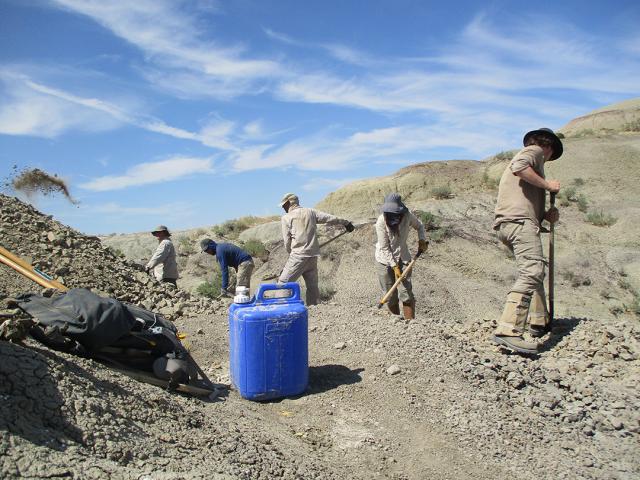BLM releases Crowdsourcing and Citizen Science Action Plan
Organization:
Media Contact:
WASHINGTON, D.C. – In order to inform the mission of the agency, the Bureau of Land Management today released the agency’s Crowdsourcing and Citizen Science Action Plan, which is designed to help BLM and its partners identify new opportunities for the public to assist the BLM in filling critical gaps in knowledge of the ecosystems, landscapes, and native wildlife and plants found across the 245 million acres managed by the agency.
The Action Plan – part of a larger bureau-wide effort to expand BLM’s science capacity and knowledge base – contains resources, guidance, and examples of crowdsourcing and citizen science that can help spur new initiatives and projects. BLM offers multiple opportunities for the public, volunteers, and partner organizations to participate in research projects, crowdsourcing efforts, wildlife surveys and similar initiatives across the nation.
“The Bureau of Land Management’s mission and authorities require us to use the latest scientific research and findings to ensure that the lands and resources in our care are managed sustainably for generations to come. The public is uniquely positioned to help us better understand the incredible diversity of these lands and make better management decisions affecting them,” said BLM Director Tracy Stone-Manning. “We’re excited to enlist more Americans in on-the-ground initiatives and research that will bring them closer to their public lands heritage.”
Opportunities range from participating in a BioBlitz – an event that focuses on finding and identifying as many species as possible in a specific area over a short period of time – to identifying bees and other insect pollinators in Alaska, repeating photographic documentation of National Conservation Areas of Colorado, and identifying and counting birds along the coast of California. Examples of past crowdsourcing and citizen science include:
- Colorado BLM and the U.S. Department of Agriculture’s Forest Service used crowdsourcing and citizen science methods to engage the public in a Human Ecology Mapping effort for the newly established Browns Canyon National Monument. This effort combined traditional stakeholder collaboration with social science methods and a public participatory GIS approach to improve our understanding of existing ties between people and the Monument landscape. In this way, people were able to share their experiences with these lands, what those experiences meant to them, and how they wanted to see them reflected in BLM’s planning process. The effort fostered positive federal-state-private relationships which still hold today.
- In Nevada, BLM partnered with the local community and partner organizations to conduct a BioBlitz at the Basin and Range National Monument in 2021. Participants recorded 1,728 observations of 406 native wildlife and plant species using the iNaturalist app during the three-day event in eastern Nevada.
This data helped to further inform and refine U.S. Geological Survey habitat models for wildlife within the monument, filling in enormous gaps in our understanding of species abundance and distribution in remote parts of the monument. Since the BioBlitz, the BLM has entered into new cooperative agreements with three participating organizations, spurring new funding proposals and projects that will help guide management of the Monument for years to come.
The Citizen Science Action Plan contains descriptions of these and many other completed and ongoing projects across the West.
“The vital information citizen science provides has already helped us make better decisions about the lands in our care, improve sustainability, and reduce impacts to sensitive landscapes, ecosystems, and wildlife. And we’ve barely scratched the surface of what can be done,” said Thomas Heinlein, BLM Assistant Director for National Conservation Lands and Community Partnerships. “Our goal is to build on this success and develop new and innovative ways to engage the public in our information gathering process.”
You can find more information about the plan itself as well as information about current and future crowdsourcing and citizen science initiatives, at https://www.blm.gov/learn/science-in-blm/citizen-science, or by reaching out to your local BLM office.
The BLM manages about 245 million acres of public land located primarily in 12 western states, including Alaska, on behalf of the American people. The BLM also administers 700 million acres of sub-surface mineral estate throughout the nation. Our mission is to sustain the health, diversity, and productivity of America’s public lands for the use and enjoyment of present and future generations.

